Action-Reaction Forces - Definition, Examples, Quiz, FAQ, Trivia
Discover how forces always work in pairs and explore the science behind action and reaction!
Newton's Third Law of Motion
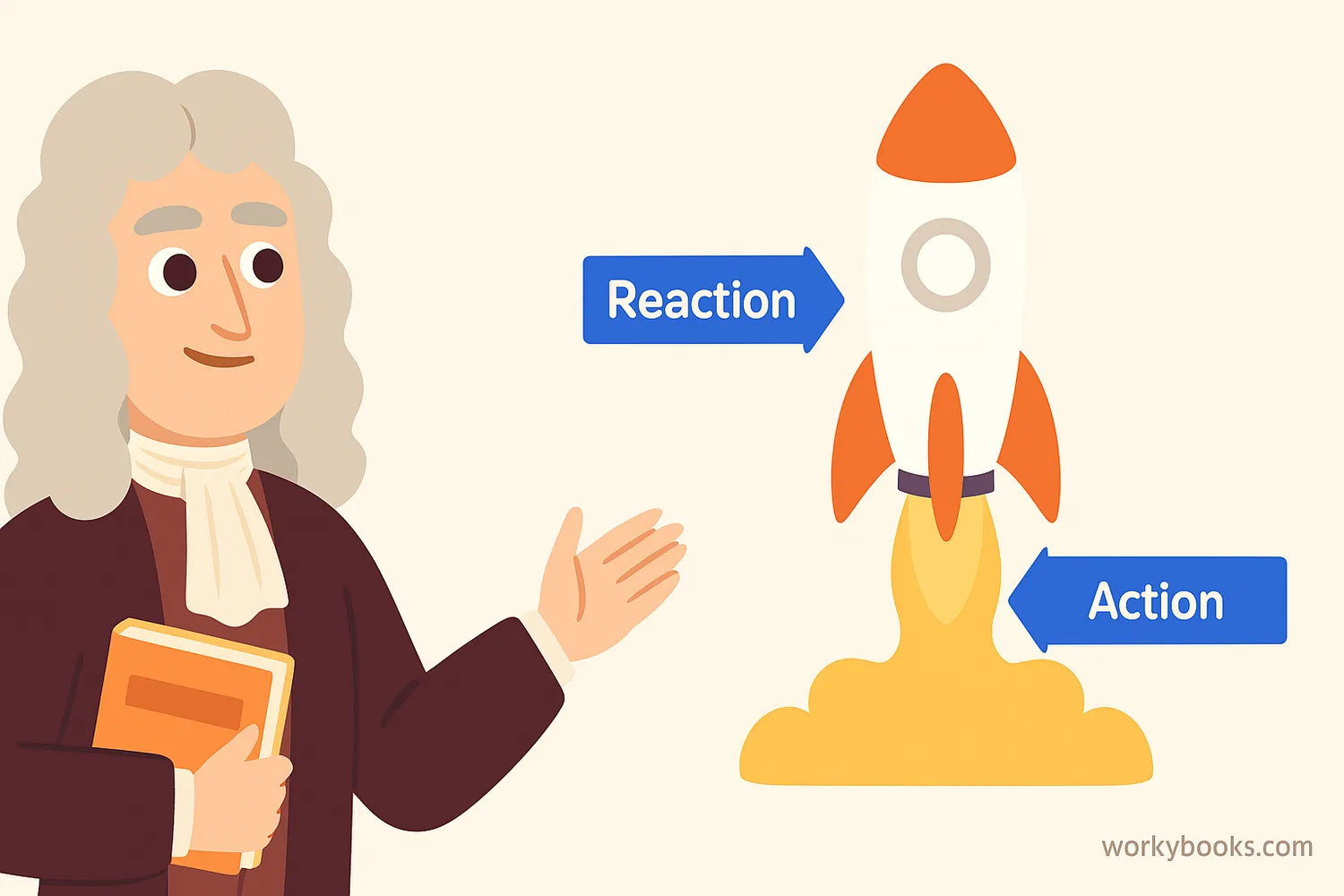
Newton's Third Law of Motion states that for every action, there is an equal and opposite reaction. This means that whenever one object exerts a force on another object, the second object exerts an equal force in the opposite direction on the first object.
Think of it like this: if you push against a wall, the wall pushes back against you with exactly the same amount of force. The forces always come in pairs - you can't have one without the other!
Science Fact!
Newton published his three laws of motion in 1687 in his famous book "Philosophiæ Naturalis Principia Mathematica." These laws became the foundation of classical mechanics.
Action-Reaction Force Pairs
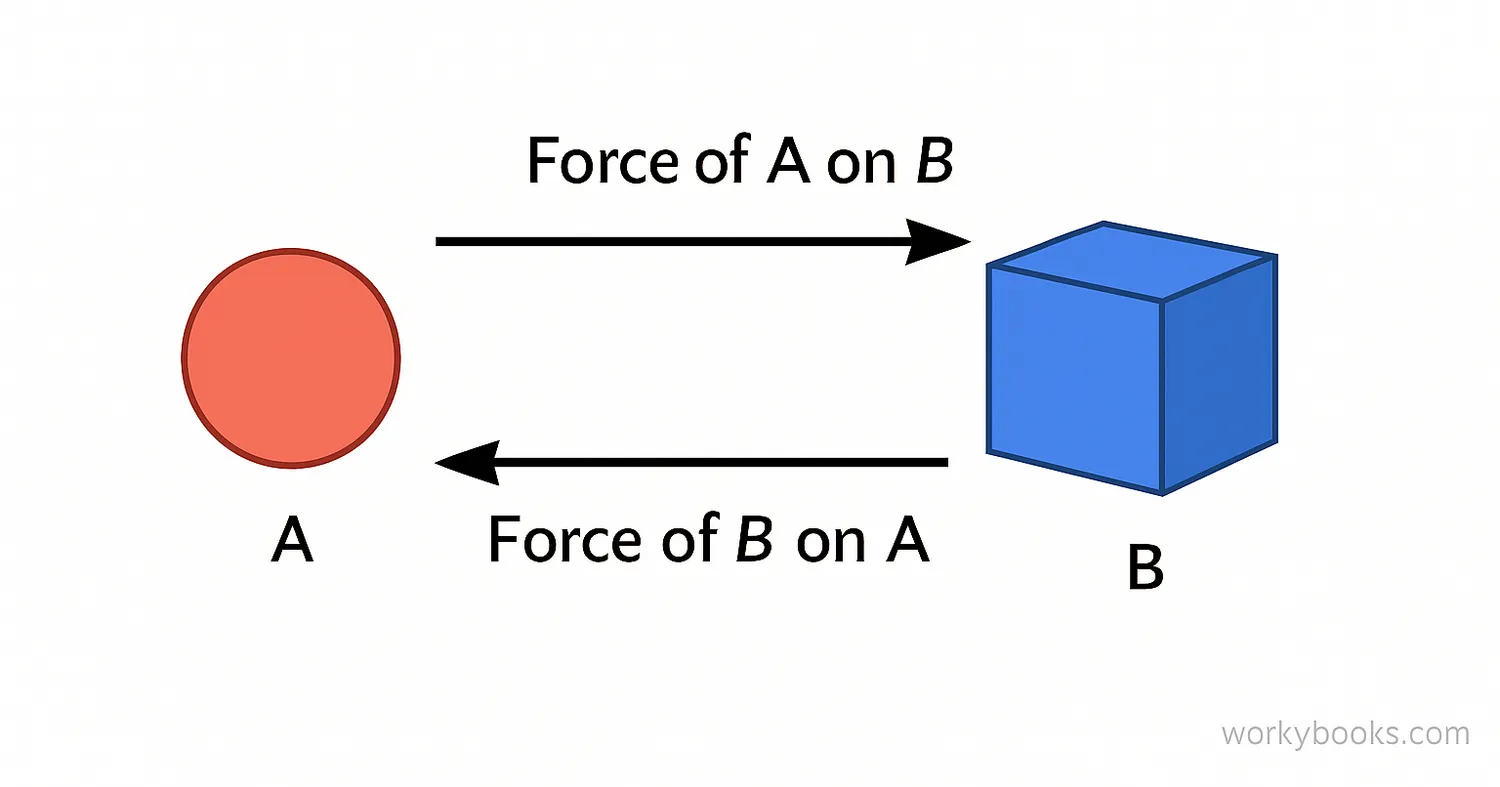
Action-reaction force pairs have three important characteristics:
Equal Strength
Both forces in the pair have exactly the same magnitude
Opposite Direction
The two forces always act in opposite directions
Different Objects
Each force acts on a different object
It's important to remember that action and reaction forces never act on the same object. If they did, they would cancel each other out and nothing would ever move! Instead, each force acts on a different object, which is why motion occurs.
Real-World Examples
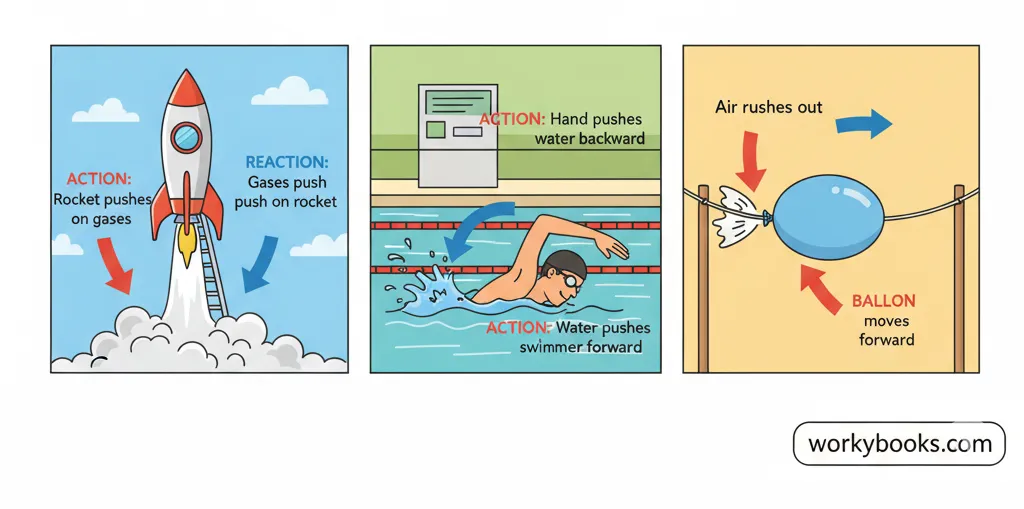
Newton's Third Law is at work all around us. Here are some common examples:
Rocket Launch
Rockets push exhaust gases downward (action), and the gases push the rocket upward (reaction).
Swimming
Swimmers push water backward (action), and the water pushes the swimmer forward (reaction).
Walking
Your foot pushes backward on the ground (action), and the ground pushes your foot forward (reaction).
Balloon Rocket
Air rushes out of a balloon (action), and the balloon moves in the opposite direction (reaction).
Next time you see something moving, try to identify both forces in the action-reaction pair. You'll be surprised how often you can spot Newton's Third Law in action!
Conservation of Momentum
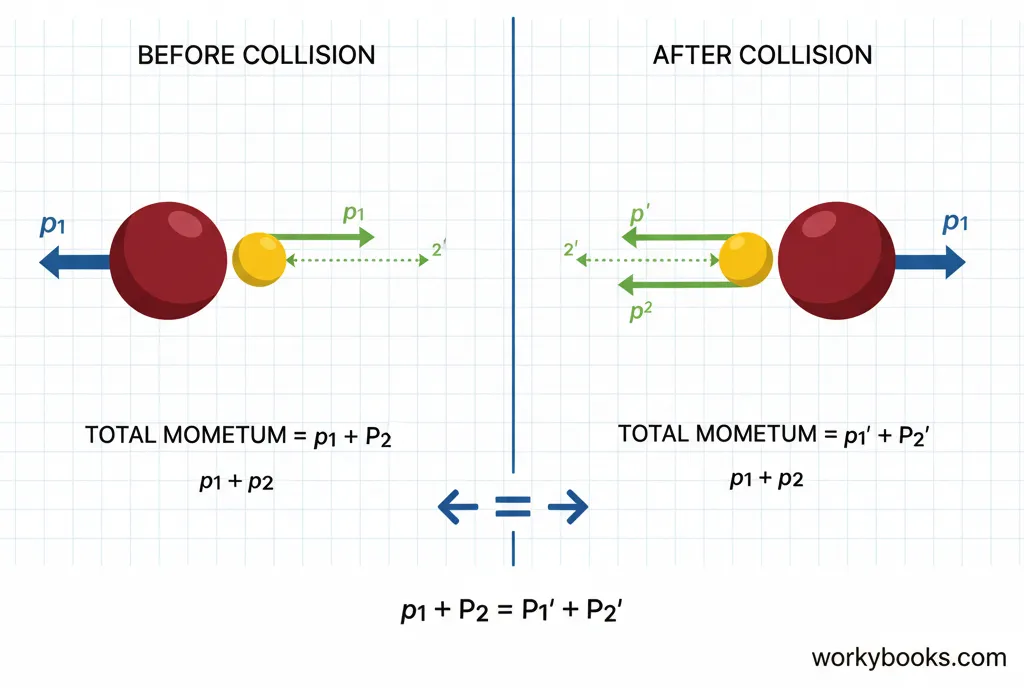
Momentum is a property of moving objects that depends on both their mass and velocity. The law of conservation of momentum states that the total momentum of a system remains constant if no external forces act on it.
Newton's Third Law helps explain why momentum is conserved. When two objects interact, the forces they exert on each other are equal and opposite. These forces act for the same amount of time, so the impulses (force × time) are also equal and opposite. This means that the change in momentum of one object is exactly balanced by the opposite change in momentum of the other object.
Momentum Formula
Momentum (p) = mass (m) × velocity (v). The unit of momentum is kg·m/s.
Inertia and Forces
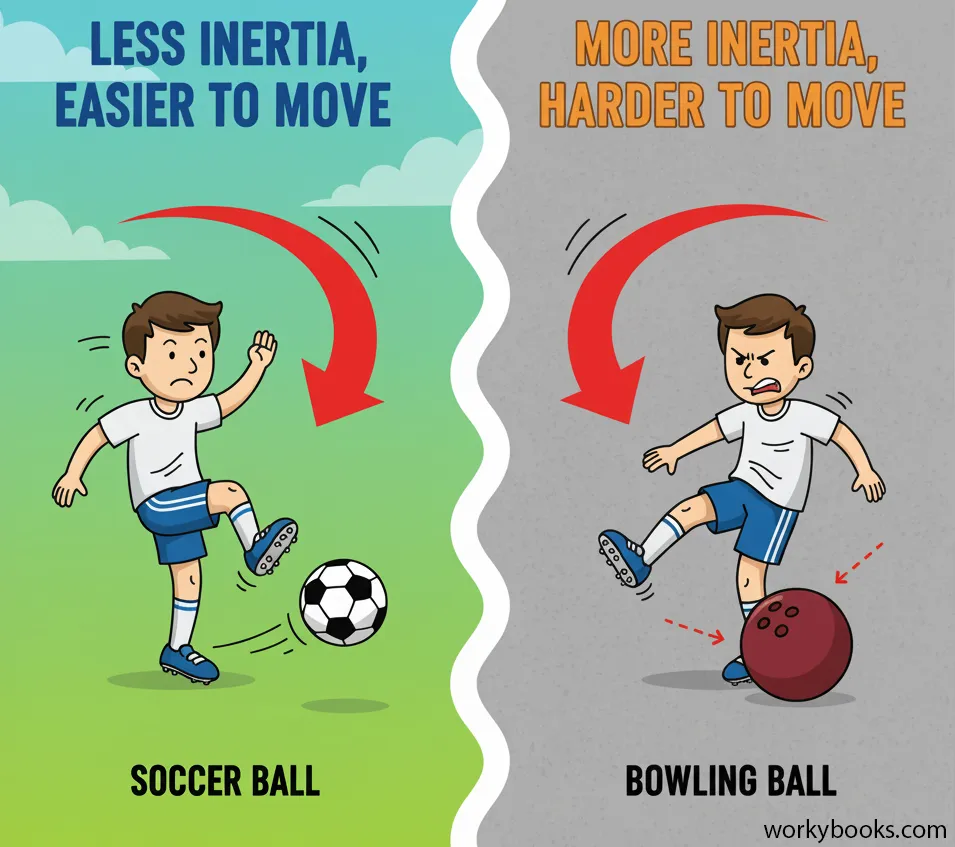
Inertia is related to Newton's First Law of Motion, which states that an object at rest stays at rest, and an object in motion stays in motion with the same speed and in the same direction unless acted upon by an unbalanced force.
Inertia is the tendency of objects to resist changes in their motion. The more mass an object has, the more inertia it has, and the harder it is to change its motion. This is why it's easier to push a bicycle than a car, and why it's harder to stop a bowling ball than a tennis ball when they're moving at the same speed.
Large Mass
More inertia, harder to start or stop moving
Small Mass
Less inertia, easier to start or stop moving
No Force
Objects keep doing what they're doing
Physics Quiz
Test your understanding of Newton's Third Law with this quiz! Answer all 5 questions to see how much you've learned.
Frequently Asked Questions
Here are answers to some common questions about Newton's Third Law:
Science Trivia
Discover some amazing facts about forces and motion!
Newton's Apple
The story of Newton discovering gravity when an apple fell on his head is probably exaggerated. He did see an apple fall and began thinking about forces, but there's no evidence it actually hit him!
Rockets in Space
Rockets can work in space because they don't push against the air. Instead, they work by expelling exhaust gases backward, which pushes the rocket forward through action-reaction forces, even in the vacuum of space.
Tiny Forces
Newton's Third Law applies even at the microscopic level. When bacteria use their flagella to swim, they push water backward (action), and the water pushes the bacteria forward (reaction).
Sports Physics
When a baseball player hits a ball, the bat exerts a force on the ball (action), and the ball exerts an equal force on the bat (reaction). This is why hitters often feel a stinging sensation in their hands when they don't hit the ball perfectly.


